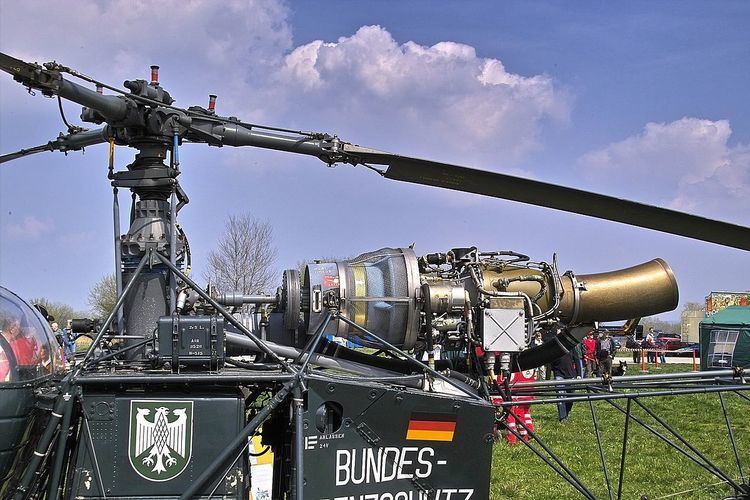 | ||
The Turbomeca Astazou is a highly successful series of turboprop and turboshaft engines, first run in 1957. The original version weighed 110 kg (243 lb) and developed 240 kW (320 shp) at 40,000 rpm. It was admitted for aviation service on May 29, 1961 after a 150-hour test run. The main developing engineer was G. Sporer. It was named after two summits of the Pyrenees.
Contents
A simplified version was built by Agusta as the Turbomeca-Agusta TA.230.
Design and development
The Astazou IIA version was derived from the original Astazou powerplant for use in helicopters. By 1993, 2,200 had been built. As of 2007, it was still in production. However, many aircraft initially equipped with it, especially the heavier ones, have since been upgraded with more powerful engines.
The basic design of the single shaft Astazou has a two-stage compressor, with the first stage an axial and the second stage a radial design. It has an annular combustion chamber, after which the hot exhaust enters a three-stage axial turbine. Maximum rpm was later raised to 43,500.
Production turbines have a reduction gear in front of the air inlet, reducing propeller speed to 1,800, 2,080, 2,200, 0r 2,400 rpm, or 6,000 rpm in the helicopter version. The engine controls itself automatically, so the pilot only needs to set the desired rpms.
As of the Astazou X, the engine received a second axial compressor stage. This was the engine for the Potez 840. The Astazou XIV and XVI were also marketed by Rolls-Royce Turboméca International Ltd under the names AZ14 and AZ16, respectively.
Power was steadily increased over the years, with the Eurocopter Dauphin's dual Astazou XVIII developing 783 kW each. The Astazou XX received a third axial stage, raising compression even further to achieve aprojected output of 1075 kW in the turboprop application. The XXB derivative, used in the single engine SA 361H Dauphin, has 1,043 kW (1,399 shp).
Astazou XVI
The circular air inlet behind the reduction gear has a de-icing device using hot air. The compressor's two axial stages use blisks. The shaft runs on ball bearings. Air flow through the annular combustion chamber is S-wise, with fuel being added in radial direction by a rotating atomizer disc. The blades of the three-stage turbine's wheels, also blisks, are air-cooled from the inside. The jet nozzle is fixed with an interior cone. Auxiliary drives are mounted on a mounting plate behind the inlet, which also has the connections for starter motor/generator, oil and fuel pumps, engine speed control and tachometer. There are also optional drives for an AC generator and a hydraulic pump. The whole engine is mounted at three points, two trunnions on the right and left front of the turbine casing and one on its underside to the rear. Speed control is effected automatically by governing the injection volume, with a thermal regulator allowing for short-term overloads.
Variants
gearbox.
